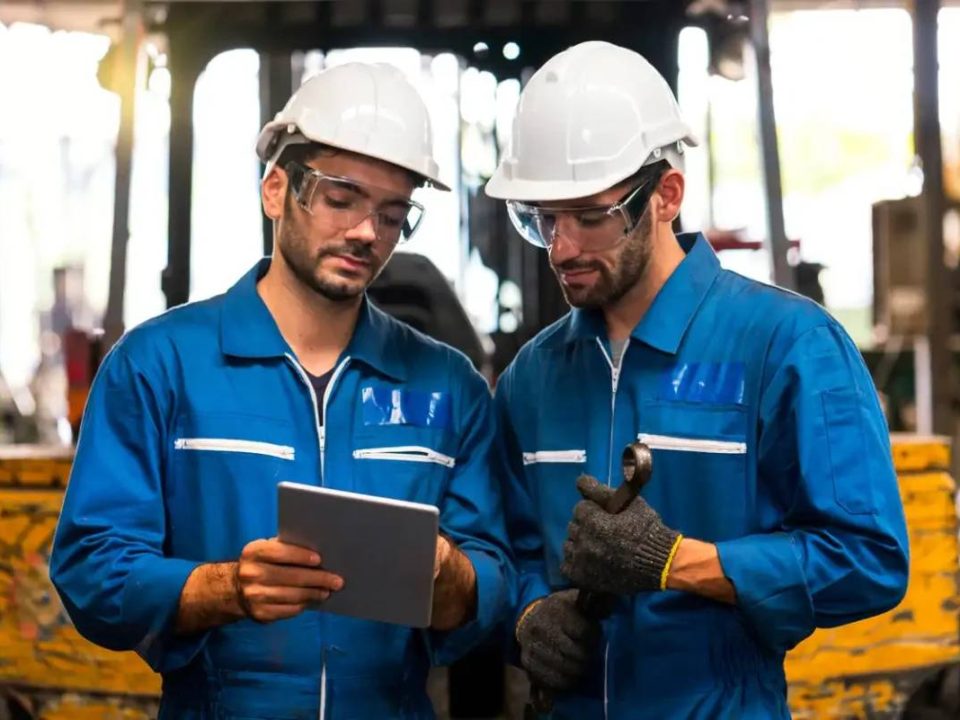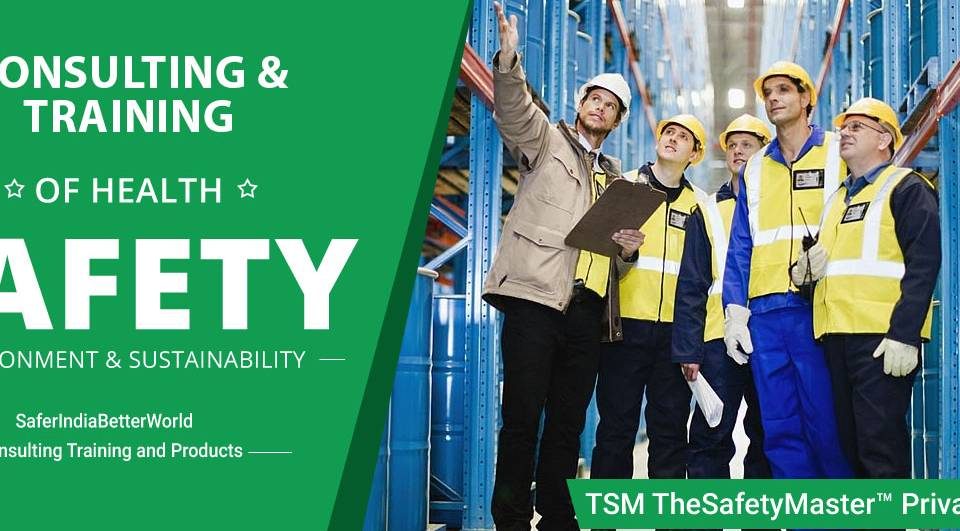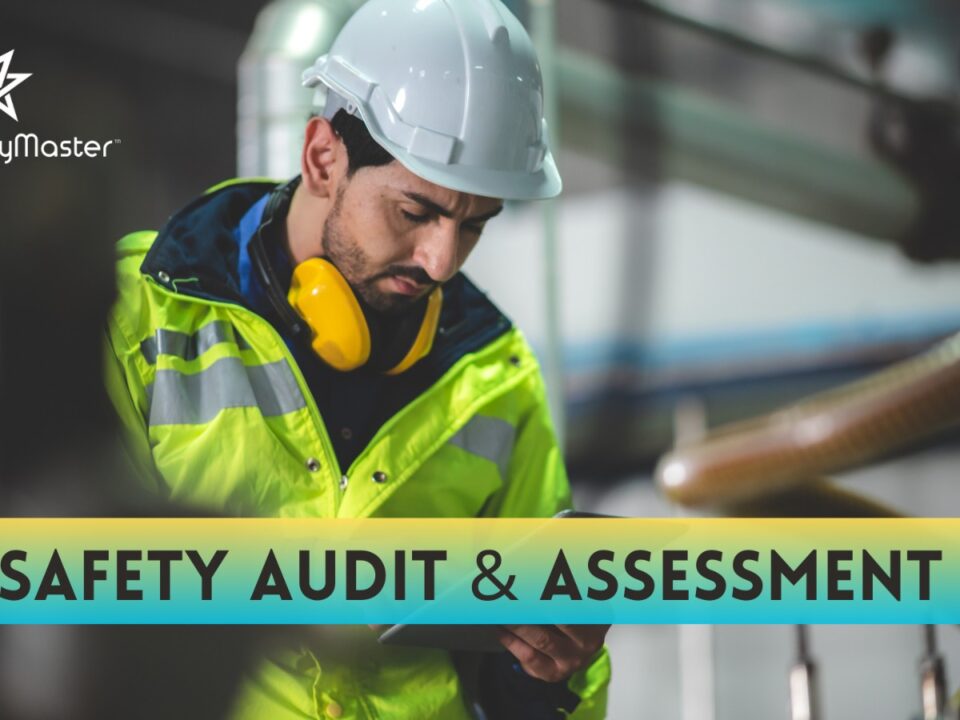Construction Safety Audit

Emergency Response Plan Preparation for your Factory by TheSafetyMaster
August 12, 2023
Certified Scaffolding Safety Training by TheSafetyMaster
August 16, 2023Welcome to the world of construction, where safety takes center stage. In an industry that thrives on progress and innovation, ensuring the well-being of workers should be a top priority. Unfortunately, construction sites are inherently hazardous environments, presenting numerous risks and potential dangers.
In this article, we delve into the crucial realm of Construction Safety Audits – a comprehensive approach to analyzing and enhancing safety practices in construction projects. Whether you are a construction professional seeking to improve safety standards or simply interested in understanding how these audits contribute to a safer working environment, this article promises valuable insights and actionable steps.
Understanding the Importance of Construction Safety Audits
In the realm of construction, where hazards lurk at every corner, safety should always take precedence. Construction safety audits play a vital role in ensuring that projects are carried out with an unwavering commitment to the well-being of workers and the surrounding community. These audits serve as a comprehensive evaluation of safety protocols, identifying potential risks and providing actionable recommendations to enhance overall safety performance.
Construction safety audits not only demonstrate a company’s dedication to protecting its workforce but also establish its reputation as a responsible and conscientious organization. By conducting regular audits, construction companies actively promote a culture of safety, fostering an environment where employees feel supported and empowered to prioritize their own well-being. Ultimately, this diligent commitment to construction safety leads to decreased accidents, increased productivity, and improved project outcomes that benefit both workers and stakeholders alike.
The Story Behind a Successful Construction Safety Audit Journey
Embarking on a construction safety audit journey is no small feat. It requires dedication, perseverance, and a collective commitment to ensuring the well-being of every worker on site. The story of a successful construction safety audit journey begins with an organization’s realization that safety is not just a regulatory requirement, but an ethical responsibility.
Imagine a construction company that, once plagued by frequent accidents and near-miss incidents, decided to overhaul its entire approach to safety. They made a conscious decision to prioritize the welfare of their workers above all else – an unwavering pledge that ignited a transformative trajectory towards excellence.
At the heart of this journey was leadership that recognized the inherent value in investing time, effort, and resources into creating a culture where safety was engrained in every aspect of their operations. This commitment permeated through all levels of the organization, from top-level management down to frontline workers.
Their first step involved extensive research and analysis to identify existing gaps in their safety practices. By meticulously studying past incidents and near misses, they gained invaluable insight into potential hazards lurking within their construction sites. Armed with this knowledge, they meticulously crafted new policies and procedures aimed at mitigating risks while optimizing productivity.
However, ensuring safe work practices was only part of the equation. To empower workers to make informed decisions about their own well-being and those around them, comprehensive training programs were implemented. From proper handling techniques for heavy machinery to emergency response procedures – no stone was left unturned in equipping employees with the knowledge necessary to navigate potentially hazardous situations with confidence.
Inspired by continual improvement principles, regular
Step 1: Establishing a Strong Safety Culture in Your Construction Projects
In the realm of construction safety, creating a robust safety culture is akin to laying a solid foundation for a high-rise building. It forms the bedrock upon which all other safety measures stand, ensuring that every worker’s well-being becomes paramount. A strong safety culture is not merely about following regulations; it involves fostering an environment where everyone takes personal responsibility for their own safety and the safety of their colleagues.
Building this culture starts with effective leadership that prioritizes and champions safety at all levels of the organization. Leaders must lead by example, demonstrating unwavering commitment to safe practices on construction sites. By actively engaging workers, providing them with proper training and resources, and fostering open communication channels, companies can empower employees to take ownership of their own well-being. When each individual understands that they are an essential part of the larger safety framework, it cultivates a collective mindset where safety becomes ingrained in every action.
Step 2: Identifying and Assessing Potential Hazards in Construction Sites
When embarking on a construction safety audit, one of the crucial steps is to identify and assess potential hazards lurking within construction sites. This stage requires meticulous attention to detail and a comprehensive understanding of the inherent risks present in such dynamic environments.
Construction sites are a breeding ground for various hazards that can pose threats to the well-being of workers. From precarious scaffolding to heavy machinery, electrical hazards to hazardous materials, each element demands careful scrutiny. A thorough analysis must encompass not only immediate dangers but also those that might arise during different phases of the project.
The process involves conducting comprehensive site inspections by trained professionals who possess expertise in hazard recognition. By closely examining each aspect of the construction site, potential risks can be flagged and documented systematically. This allows for an accurate assessment of their severity and likelihood, enabling proactive measures to mitigate or eliminate them entirely.
It is imperative to approach this step with utmost dedication and thoroughness as it lays the foundation for creating a safer work environment. By effectively identifying and assessing potential hazards, construction teams can significantly reduce accidents, injuries, and even fatalities.
Step 3: Implementing Safe Work Practices and Standard Operating Procedures
Implementing safe work practices and standard operating procedures (SOPs) is an essential aspect of a comprehensive construction safety audit. SOPs provide clear guidelines to workers, ensuring that they understand and follow safety protocols diligently. These procedures outline the necessary precautions, equipment usage guidelines, and emergency response plans, leaving no room for ambiguity or confusion.
By implementing robust SOPs, construction companies can cultivate a culture of safety in their workforce. Workers become more aware of potential hazards and are equipped with the knowledge required to mitigate risks effectively. Moreover, SOPs facilitate consistency in work practices across different job sites, reducing the likelihood of accidents caused by inconsistent or inadequate safety measures.
Step 4: Ensuring Proper Training and Certification for Workers
Training and certification play a pivotal role in ensuring the safety of construction workers. By equipping them with the necessary knowledge and skills, we empower our workforce to navigate the challenging construction environment with confidence and competence.
In this step, it is crucial to design comprehensive training programs that cover all aspects of safety protocols, from identifying potential hazards to using personal protective equipment (PPE) effectively. These programs should be tailored to address the specific needs of different roles within the construction industry, whether it be carpenters, electricians, or heavy machinery operators.
Apart from theoretical knowledge, hands-on training should also be emphasized to simulate real-life scenarios. Through practical exercises and simulations, workers can actively engage in hazard identification and risk mitigation strategies. This interactive approach fosters a deeper understanding of safety procedures and encourages proactive thinking when faced with potential dangers.
Step 5: Regular Inspections and Ongoing Safety Monitoring
Regular inspections and ongoing safety monitoring are crucial components of a comprehensive construction safety audit. By conducting routine inspections, construction companies can proactively identify potential hazards before they escalate into accidents or injuries. These inspections involve a thorough examination of the construction site, equipment, tools, and work processes to ensure compliance with safety regulations and best practices.
During these inspections, trained professionals meticulously analyze the site’s layout, structural integrity, electrical systems, scaffolding, personal protective equipment (PPE) usage, and adherence to safety protocols. This diligent scrutiny serves as a preventive measure that not only protects workers but also promotes an atmosphere of accountability and continuous improvement within the organization.
Moreover, ongoing safety monitoring involves real-time observation of activities on the construction site to detect any deviations from established safety procedures. By closely monitoring work processes, supervisors can intervene promptly if they notice unsafe behavior or conditions. Timely interventions help mitigate risks and foster a culture where prioritizing safety becomes second nature to every worker on-site.
This commitment to regular inspections and continuous monitoring sets the stage for an environment where everyone feels responsible for each other’s well-being. It reinforces the notion that safeguarding lives goes beyond mere compliance; it is an ethical responsibility embraced by all stakeholders involved in construction projects.
Step 6: Effective Communication and Reporting Systems
In the realm of construction safety, effective communication and reporting systems play a pivotal role in ensuring the well-being of workers and the success of any project. Allowing for seamless exchange of information, these systems serve as vital conduits between management, supervisors, and workers on-site.
A robust communication system fosters transparency and encourages workers to report hazards or near-miss incidents promptly. It enables the dissemination of safety-related instructions, updates, and changes efficiently. Moreover, a well-implemented reporting system not only facilitates prompt action but also aids in tracking trends, identifying patterns, and implementing proactive measures to prevent future accidents.
By establishing clear lines of communication through regular toolbox talks, team meetings, and safety briefings, construction companies enhance worker engagement and promote a collaborative approach towards safety. Encouraging open dialogue between all stakeholders creates an environment where concerns are addressed promptly, leading to improved trust levels among the workforce.
Furthermore, technology can be harnessed to enhance communication within construction sites. Utilizing mobile applications or digital platforms for incident reporting can streamline the process by enabling real-time updates with multimedia attachments such as photos or videos. Such tools not only expedite response times but also ensure accurate documentation for future reference.
An effective communication and reporting system is an integral part of a successful construction safety audit strategy. By fostering collaboration, promoting transparency, and leveraging technology-driven solutions where appropriate; construction companies can cultivate a culture that prioritizes worker welfare while achieving project goals with unparalleled efficiency.
Step 7: Continuous Improvement and Learning from Past Incidents
In the realm of construction safety, striving for continuous improvement is crucial to ensure a safer working environment. Learning from past incidents and near misses allows us to identify areas for enhancement and implement proactive measures. By embracing a culture of learning, construction companies can create a positive shift towards preventing accidents and optimizing safety standards.
One effective method of continuous improvement is conducting thorough incident investigations. When an accident occurs, it is essential to analyze the root causes rather than focusing solely on the immediate outcomes. By delving deeper into the factors leading up to an incident, we gain valuable insights that can help prevent similar occurrences in the future.
Furthermore, sharing these lessons learned with all workers plays a vital role in collective growth and awareness. Communicating openly about past incidents not only fosters a sense of transparency but also empowers employees to contribute proactively to safety practices. This open dialogue encourages innovative thinking and instills a shared responsibility among all team members.
To promote continuous improvement, construction companies should establish mechanisms such as regular safety meetings or toolbox talks dedicated to discussing previous incidents and implementing corrective actions. Additionally, establishing feedback loops that allow workers to report potential hazards or suggest improvements further enhances a culture of learning and encourages everyone’s active participation in enhancing workplace safety standards.
By dedicating attention to continuous improvement and learning from past incidents, construction sites become vibrant hubs for innovation and safer practices. Each accident becomes an opportunity for growth, fostering resilience within the industry while ensuring that every worker returns home safely at the end of each day.
Inspiring Case Study: How a Construction Company Transformed Safety Practices
Within the realm of construction safety audits, there exists a remarkable case study that exemplifies the transformative power of a committed approach to safety. In this captivating tale, we delve into the narrative of ABC Construction Company, which went from encountering frequent accidents to becoming an industry leader in safety precautions.
ABC Construction Company recognized that enhancing their safety practices was not just about meeting regulatory requirements, but rather a moral obligation towards their workforce. To initiate this profound transformation, they established dedicated safety committees comprising representatives from all levels of the organization. These committees empowered workers by giving them an active role in identifying potential hazards and suggesting preventive measures.
Conclusion
In conclusion, the implementation of a comprehensive construction safety audit is paramount in ensuring the well-being and protection of workers in this high-risk industry. By establishing a strong safety culture, identifying hazards, implementing safe work practices, providing proper training, conducting regular inspections, and fostering effective communication and reporting systems, construction companies can create a safer environment for all involved. The inspiring case study showcased how dedication to safety transformed an entire company’s practices and yielded remarkable results. With an unwavering commitment to continuous improvement and learning from past incidents, we can confidently stride towards a future where construction sites are synonymous with unwavering safety standards – creating not only impressive structures but also thriving communities built on the foundation of worker welfare.
With Best Wishes
Sanjeev Paruthi
TSM TheSafetyMaster® Private Limited
Unit No 221-451-452, SPL1/J, 2nd & 4th Floor, Sunsquare Plaza Complex, RIICO Chowk, Bhiwadi 301019, Rajasthan, India
Phone: +91 1493 22 0093
Mobile: +91 7665231743/9413882016
Email: info@thesafetymaster.com




